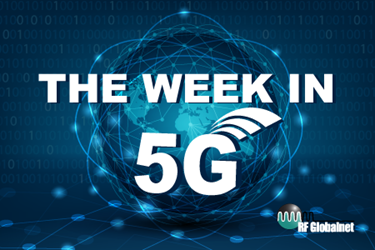The Week in 5G: 9/16/21 — Orolia Keeps Time On Galileo Satellites, China Reveals 6G Timeline

By Abby Proch, former editor

AT&T announced it’s tapping OneWeb’s low Earth orbit (LEO) satellites to pick up coverage for business customers outside fiber’s reach. OneWeb has 288 satellites currently in orbit and expects to launch a total of 648 by the end of next year. In doing so, OneWeb claims it will then offer complete global coverage. Alaska and some northern states will be among the first to benefit from the new partnership, with business and government partners in hard-to-reach areas gaining the satellite back-up coverage by the end of this year, says the release.
FreeWave is also stepping up to offer remote enterprises more reliable internet connectivity. FreeWave’s new Fusion Satellite reportedly already offers 100 percent global coverage and costs as much as 20 times less than legacy solutions, according to a company press release. Powered by Swarm Tile satellite modems, the Fusion claims to provide reliable solutions to IIoT (industrial internet of things) operations in remote areas.
Also in SatCom news, Orolia secured roughly $76.8 million in two separate contracts to provide atomic clocks to the second round of Galileo satellites, according to a company press release. The Swiss positioning, navigation and timing (PNT) company contracted with the European Space Agency and Leonardo to outfit each of the next 12 G2S satellites with three of its Spectratime RAFS (Rubidium Atomic Frequency Standards) and two atomic clock physics packages with Leonardo’s Passive Hydrogen Masers (PHM). Orolia currently has 114 RAFS flying on Global Navigation Satellite Systems (GNSS) constellations.
In UAV news, Swiss drone company Photokite has partnered with Virgin Media O2 for a trial run of its 5G-enabled, tethered drone, according to a press release. The drone deploys in just two minutes and can reach heights up to 45 meters, from which it relays real-time data to a tablet below. Its low latency, uninterrupted livestream, and quick set up mean improved responses in emergency situations, says the release. The tethered drone also requires no pilot’s license (in the UK) and can endure harsh weather conditions.
In 5G deployment news, wireless operator China Mobile and national cable TV provider China Broadcasting Network (CBN) are jointly deploying a 5G network, with China Mobile paying base stations costs and CBN building the base station and optical fiber networks, according to a report by Mobile World Live. CBN will also have the option buy back 50 percent of the network assets and will pay China Mobile a usage fee.
Also in China, state-run media reported Chinese telecom Huawei plans to launch 6G products around 2030. Global Times reports that Huawei Chairman Eric Xu Zhiju said the company began eyeing 6G as it was pursuing commercialization of 5G, dating back to 2017. China reportedly launched an experimental 6G satellite in 2020. Zhiju also noted the one-year anniversary of the U.S ban on Huawei chips but downplayed any lasting effect on the company’s viability.
In other rollout news, Nokia and Vodafone Turkey claim that they transmitted 1Tb/s (terabit per second) per channel coherent over Vodafone’s network, according to a Nokia press release. The exercise, they say, is another step in their digital transformation toward achieving 5G. The demonstration reportedly recorded a 150% increase over a single channel coherent and demonstrated ability to increase network capacity up to 70Tb/s per fiber.
Finally, in Australia, officials are making Adelaide the country’s hot spot for all things space. There, Nokia and Microsoft are founding Azure Space, a collaboration with the South Australian government to cultivate space technology and 5G telecommunications advances, according to a Microsoft press release. Minister for Trade and Investment Stephen Patterson also pointed to the area’s development of a LEO satellite and a commitment to “a new era of communications and cloud computing.” According to the release, the global space industry is estimated to be worth $1.1 trillion by 2040, with 5G technology set to add $8 trillion to global GDP by 2030.
